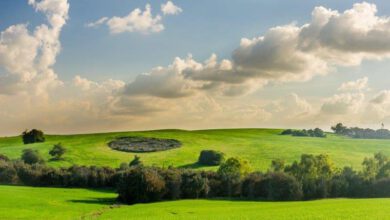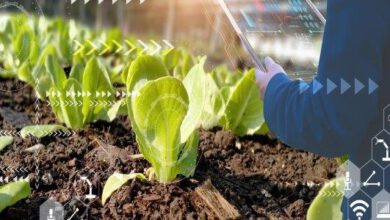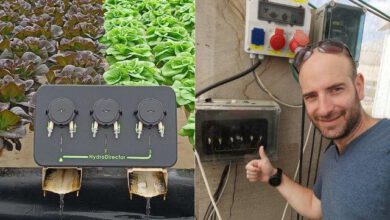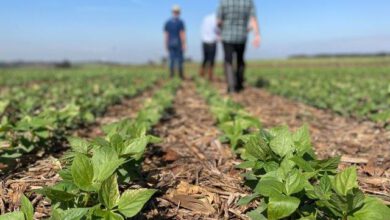Spectral assessment of plant traits: can we assess what we do not see?
Global and regional climatic variability can cause and enhance abiotic stresses
Yaniv Tubul, Roy Sadeh, Rom Tarshish, Gabriel Mulero, Prosperidad Abonete, Tslil Nacson & Ittai Herrmann*


The ever-increasing world population size, conjugated with the rising demand for agricultural products, poses serious challenges to agricultural plant research focusing on maintaining global food security. Global and regional climatic variability can cause and enhance abiotic stresses (e.g., drought and heat) that adversely impact crops and yields. In order to achieve efficient and sustainable agriculture, meaning maximal profit with minimal environmental footprint, there is a need to use the suitable resources only where and when they are needed. This is the concept of site specific agriculture as recently brain stormed by members of the International Society of Precision Agriculture (ISPA): “Precision Agriculture is a management strategy that gathers, processes and analyzes temporal, spatial and individual data and combines it with other information to support management decisions according to estimated variability for improved resource use efficiency, productivity, quality, profitability and sustainability of agricultural production”.
Based on the historical trend of crop yield increase, improvement of agricultural management can go a long way but it is also influenced by genetics. Therefore, plant breeding is another pillar of accomplishing global food security. The traditional way of breeding includes manual phenotyping that is time consuming as well as subjective (although applied by trained professionals). There are plant morpho-physiological traits traditionally measured and assessed by breeders, some of them can be assessed based on imagery and spectral data. In breeding, genetics is no longer the bottle neck but phenomics is the limiting factor.
There is a need to develop high throughput phenotyping techniques to assess plant traits. While there aretraits that will be very challenging to sense there are many traits that can be assessed by high throughput sensing systems in accuracy level that is practical to use. Even if selection of the best genotype is a challenge, a threshold can be set in order to eliminate other genotypes thereby saving resources.
.jpg)
From left to right: Gabriel, Roy and Prosperidad in a chickpea field operating two spectroradiometers: one continuously acquiring atmospheric spectral condition and the other obtains spectral reflectance of the canopy. The data is fed to the pre-processing pipeline to reduce the atmospheric effect on the canopy reflectance.
High throughput systems produce big amounts of data and there is a need to learn how to collect high quality data, then to store and pre-process it to make sure it is accurate enough, and only then start to analyze. In some cases, it can be considered as big data analytics.
Proximal and remote sensing offers efficient and non-destructive solutions for estimation of crop morpho-physiological parameters and determination of their spatial variability. It can be used to evaluate crop growth on sub-field, regional and global scales.
.jpg)
Rom is operating an infra-red gas analyzer (IRGA) sensor to assess gas exchange of sesame plants
Spectral sensing of vegetation usually refers to reflectance from canopy or leaves at the full range of 400 – 2500 nm or parts of it. Within this range the visible region (VIS; 400 – 700 nm) is highly affected by pigment absorption, the near infrared (NIR; 700-1300 nm) is mainly influenced by the leaf and canopy structure, and the short wave infrared (SWIR; 1300 – 2500nm) is mainly influenced by water content and specific materials. Intermediate region overlapping both, the visible red and the NIR, is the red-edge (RE; 650 – 760 nm).
Hyperspectral sensing and imaging are nondestructive by nature. The light interacting with plants is influenced by their chemical and physical properties, and affects reflectance at different wavelengths, and thus creates a unique spectral signature for different species and phenotypes. Utilizing a precise crop management strategy, known as precision agriculture, can improve crop production and profitability with minimized environmental effects.
.jpg)
Prosperidad in a chickpea field operating a ceptometer to assess leaf area index
The increased availability of spectral proximal and remote sensing techniques has stimulated the development of methods providingmore accurate and timely information on crop traits and status such as chlorophyll (chl) concentration estimation, leaf area index (LAI), vegetation fractional coverage assessment, yield quality and quantity prediction, nutrient concentration, water status, and maximum carboxylation rate (VCmax). Crops are not the only plants to be assessed, in order to manage weeds we need to explore them as well, to learn how to detect them and how to assess the quality of weed management applications.
Many studies have estimated traits based on leaf or canopy reflectance spectra of specific crops under specific experimental treatment and/or diverse environmental conditions. Traits commonly assessed are chl concentration which is mainly based on the visible region; canopy crop cover, which can be based on the visible region but might be improved by adding the NIR; LAI, which is usually related to the RE and NIR regions; nutrient concentration, which can be based on the full range. All these traits can be actually seen by the naked eye and/or represents the current condition of the plant.
.jpg)
Chlorophyll gradient spectral description. (a) Image of a flag wheat leaf with markings of measured areas used for chlorophyll extraction; (b) Leaf discs in Dimethyl formamide (DMF), 2 hours after sample collection; (c) Leaf discs in DMF, 48 hours after sample collection; (d) Table of chlorophyll values; (e) White panel measured with leaf clip to calibrate the spectroradiometer data; (f) Leaf measured in the leaf clip; and (g) Leaf spectral reflectance from three locations as marked in (a).
But how does spectral sensing work for other traits, such as yield, which is a desired trait for assessment by both farmers and breeders, but at the time of the spectral measurement it is unknown? In that case we spectrally assess the plants at relevant development stages during the growing season, and at harvest the actual yield is available. The actual yield is used to build a prediction model for future casesas published for maize and soybeans. The yield prediction model is based on spectral data at a certain point in time and can be improved by including measured morpho-physiological traits, genetic information as well as environmental conditions.
As said, the spectral curve is a pool of all plant traits (affected by genetics, environmental conditions and crop management) and based on that the spectral curve can predict the yield. Since there is a varying time difference between data collection and harvest the prediction is not perfect. A trait that represents the current plant condition is leaf water potential (LWP) whichis a measure of the water potential energy [in pressure units] of the plant relative to pure water and is used as a proxy for water status and therefore a parameter to set irrigation.
Although the potential itself is not seen, this trait can be spectrally assessed based on the long and short term effect of LWP on the plant morpho-physiological traits. Another trait related to plant water status is water content (i.e., % of water in plant). Water content cannot be seen by the naked eye but it is directly affecting water absorptions in the SWIR and therefore it is digitally visible. The last trait presented here is weed resistance to herbicides. This trait cannot be seen by the naked eye but in some cases it is based on morpho-physiological traits that can be spectrally assessed and therefore potentially identifiable as already published.
The Plant Sensing Laboratory (PSL) was established in 2018 and its main focus is at early stress detection and identification, and yield prediction based on sensing plant trait assessment. We are using spectral sensors (i.e., multi- and hyper- spectral cameras and spectro radiometrs) mounted on ground, airborne and spaceborne platforms to acquire spectral data. We have developed our spectral data pre-processing modular pipeline. Traits data is acquired by destructive and non-destructive sampling as input to our learning and training data sets. It is important to mention that there are additional proximal and remote sensing techniques relevant for plant research and we will be happy to fuse them with our spectral data.
* The Plant Sensing Laboratory (PSL), Plant Sciences and Genetics in Agriculture, The Robert H. Smith Faculty of Agriculture, Food and Environment,
Correspondence with Ittai Herrmann, ittai.herrmann@mail.huji.ac.il




